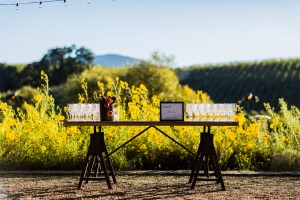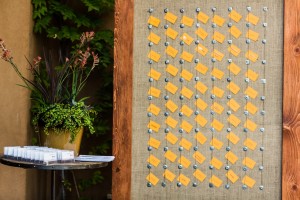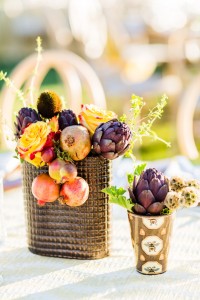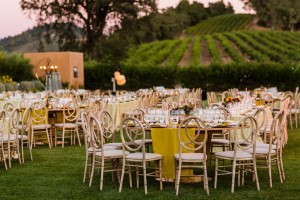Dec 10, 2013 Breaking Through the Designer’s Block: a Designer’s View of Event Planning (part 2 of 3)
By Ken Swyt, Creative Director, Wilsonwest
In my previous post, I shared a few insights on how design can play into your event planning strategy and how we event designers work to ensure a sense of place. By looking for, and capitalizing upon, the unexpected, we can do a lot to break through the designer’s block and leave a lasting impression on guests.
Let’s suppose we’ve arranged to get our guests to a venue they haven’t seen before. They’ve been thoroughly wowed by their initial glimpses of the location and they’re getting a whole new perspective on the surrounding areas.
What do we do next to make sure we don’t let them down?
Well, if we designers have done our jobs well, we’ve captured the true spirit and philosophy of the venue and our design will support—not clash with—that spirit.

Doing our job well means taking design queues from the location and space and translating them into a unique experience. With our event at Quintessa Estate in the Napa Valley, that was quite a pleasant task. The surrounding landscape gave us lots of color cues to work with. There were also some strong architectural cues. The owners’ residence was a modern building – one with plenty of organic elements such as natural wood. I played off of that with rented chandeliers similar to the ones already on the patio. Even the chairs worked in their setting. Here’s where guests retrieved their escort cards.
 The bottom line is to plan everything with a lot of thought and intent. Guests should have a seamless experience as they move from one part of the venue to the next—never seeing an element that looks out of place in its surroundings, whether it’s linens, flowers, chairs, or even the ties the waiters are wearing.
The bottom line is to plan everything with a lot of thought and intent. Guests should have a seamless experience as they move from one part of the venue to the next—never seeing an element that looks out of place in its surroundings, whether it’s linens, flowers, chairs, or even the ties the waiters are wearing.

Now as much as we take cues from our surroundings and keep in mind the theme and objectives of the event, we’re careful not to make the whole thing look forced. For example, we recently planned an event that was attended by a former President of the U.S. It would have been easy to splash stars and stripes everywhere or overuse the Presidential Seal. We took a more subtle approach by focusing on details such as making sure the napkins were folded in the same way they are at formal dinners at the White House.
And at Quintessa, we simply let the idyllic environment speak for itself and played off that organic warmth and vibrancy.
One more tip: it’s always a good idea to not only think through all the design elements we’ll need, but also consider how these elements will withstand the timeline of the event.
Quintessa provides another good example. We knew the guests would enjoy being surrounded by vineyards across the pond as they dined under a setting sun. But what would happen when the sun went down completely? Suddenly, the distant vines would disappear into darkness, and guests would lose all sense of place. With no vines in sight, they could be standing and talking in any old field!
 Fortunately, we were one step ahead. We hatched the plan of lighting up the vines so that guests would still get that Napa Valley feeling, but we thought it might be cost-prohibitive. Our pleasant surprise came when we discovered that by using inexpensive LED battery operated lights, we could illuminate just a few select rows of the vineyard to gain the effect we wanted. It was budget well spent.
Fortunately, we were one step ahead. We hatched the plan of lighting up the vines so that guests would still get that Napa Valley feeling, but we thought it might be cost-prohibitive. Our pleasant surprise came when we discovered that by using inexpensive LED battery operated lights, we could illuminate just a few select rows of the vineyard to gain the effect we wanted. It was budget well spent.
At times like this, we event designers feel like magicians! Getting the little design details just right makes it so satisfying to contribute to the overall event planning strategy. More on those details in my next post.

Sorry, the comment form is closed at this time.